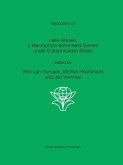National Tiger conservation Authority under MOEF, Government of India, in its guideline has emphasized the concept of core buffer zonation in every Tiger reserve. The 2006 amendment in wildlife (protection) act 1972, for the first time, has defined core and buffer areas of a tiger reserve, the former being the critical or inviolate area and later, the peripheral area to foster co existence with local people for safeguarding the integrity of the core. Since Buffer Zone is supposed to be a human dominated landscape, its very much important to have a strong management plan for conservation of wildlife and forest in these areas. the present work established a case study for the management and conservation of Buffer Zone of Sariska Tiger Reserve in Western India. The intricacies, management aims and goals, SWOT analysis and future planning of a the Buffer Zone of Sariska TR has been portrayed in the present work.








